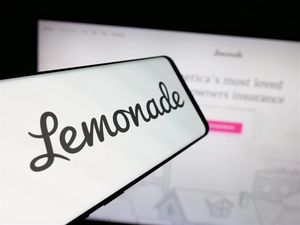
Industrial component provider Timken (NYSE: TKR) reported Q2 CY2025 results beating Wall Street’s revenue expectations, but sales were flat year on year at $1.17 billion. Its non-GAAP profit of $1.42 per share was 4.3% above analysts’ consensus estimates.
Is now the time to buy TKR? Find out in our full research report (it’s free).
Timken (TKR) Q2 CY2025 Highlights:
- Revenue: $1.17 billion vs analyst estimates of $1.15 billion (flat year on year, 2.3% beat)
- Adjusted EPS: $1.42 vs analyst estimates of $1.36 (4.3% beat)
- Adjusted EBITDA: $208.2 million vs analyst estimates of $201.3 million (17.7% margin, 3.4% beat)
- Management lowered its full-year Adjusted EPS guidance to $5.25 at the midpoint, a 1.9% decrease
- Operating Margin: 12.6%, down from 14.1% in the same quarter last year
- Organic Revenue fell 2.5% year on year vs analyst estimates of 3% declines (47.5 basis point beat)
- Market Capitalization: $5.36 billion
StockStory’s Take
Timken’s second quarter results were met with a negative market reaction, despite exceeding Wall Street’s revenue and non-GAAP profit expectations. Management attributed the flat sales and margin compression to continued softness in industrial markets, incremental tariff costs, and unfavorable currency movements. CEO Richard Kyle noted, “Our team is managing well through this period of uncertainty and continued soft market environment,” while highlighting that backlog growth in the quarter was a positive sign for the future. The company also raised its dividend and repurchased shares, but higher costs and weaker demand weighed on overall profitability.
Looking forward, Timken’s updated guidance reflects a more cautious approach for the remainder of the year, driven by ongoing trade uncertainty and subdued customer demand. CFO Philip Fracassa emphasized that the company’s lowered earnings outlook was due to reduced expectations for second-half volume, not pricing, and that a swift recovery would require “an acceleration in demand in the back half of the year.” Management sees potential margin expansion in 2026 from plant closures, ongoing cost actions, and the eventual stabilization of trade policies, but cautioned that current headwinds will likely persist in the near term.
Key Insights from Management’s Remarks
Management pointed to soft demand across core markets, cost inflation from tariffs, and incremental progress in automation as the key themes shaping the quarter and the outlook.
- Tariff costs weighed on margins: Management cited higher tariff expenses as a main reason for the year-on-year decline in operating margin. While price increases offset much of the tariff impact, there was still a net negative effect on profitability in the quarter.
- Distribution and services segment softness: Results from the Americas and EMEA regions reflected weaker demand in distribution and industrial services. CFO Philip Fracassa highlighted that discretionary spending in services was deferred due to macro and trade-related uncertainty, impacting short-cycle business.
- Automation sector investment: Timken continued to invest in high-growth automation markets, including industrial and medical robotics, with recent acquisitions like CGI contributing to margin accretion. CEO Richard Kyle emphasized the company’s broadened product offering for these applications, viewing them as a strategic focus.
- Plant closures and cost actions: The company is closing three plants by year-end and ramping up its Mexico facility. These structural changes are expected to mitigate volume declines and contribute to improved margins by 2026.
- Backlog growth signals potential recovery: Despite current weakness, management noted that order intake rates improved and backlog grew mid-single digits sequentially, which they view as a leading indicator for a possible industrial market expansion next year.
Drivers of Future Performance
Timken’s outlook for the next few quarters is shaped by persistent trade uncertainty, cost control efforts, and continued investment in automation and productivity initiatives.
- Trade policy and tariffs: Management described the current tariff environment as volatile, with the company working to mitigate cost impacts through pricing. The full-year forecast assumes some tariff escalation, and a resolution could affect both demand and cost recovery.
- Plant ramp and cost reductions: The ramp-up of the Mexico belt facility and closure of three plants are expected to enhance productivity and margins over time. Management believes these actions, along with other cost savings, will position Timken for stronger incremental margins as demand improves.
- Automation and portfolio optimization: Ongoing investments in automation and robotics, combined with active portfolio management in the auto original equipment segment, are expected to drive margin improvement and growth opportunities, especially as industrial markets recover.
Catalysts in Upcoming Quarters
In the coming quarters, the StockStory team will be watching (1) the pace of cost recovery from tariffs and the effectiveness of price increases, (2) measurable improvements in productivity and margin from the Mexico plant ramp and plant closures, and (3) momentum in automation and robotics markets, especially as new business wins and backlog growth translate to revenue. Progress in auto OEM portfolio actions and stabilization in industrial demand will also serve as important indicators of execution.
Timken currently trades at $76.91, down from $80.97 just before the earnings. Is there an opportunity in the stock?See for yourself in our full research report (it’s free).
High Quality Stocks for All Market Conditions
Trump’s April 2025 tariff bombshell triggered a massive market selloff, but stocks have since staged an impressive recovery, leaving those who panic sold on the sidelines.
Take advantage of the rebound by checking out our Top 5 Growth Stocks for this month. This is a curated list of our High Quality stocks that have generated a market-beating return of 183% over the last five years (as of March 31st 2025).
Stocks that made our list in 2020 include now familiar names such as Nvidia (+1,545% between March 2020 and March 2025) as well as under-the-radar businesses like the once-small-cap company Exlservice (+354% five-year return). Find your next big winner with StockStory today.
StockStory is growing and hiring equity analyst and marketing roles. Are you a 0 to 1 builder passionate about the markets and AI? See the open roles here.






